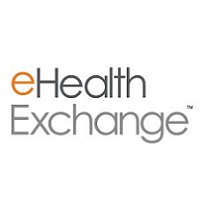 Network Celebrates 10 Years of Health Information Exchange This Month; Announces New Technology Partnerships
Network Celebrates 10 Years of Health Information Exchange This Month; Announces New Technology Partnerships
The eHealth Exchange (@eHealthExchange), one of the oldest and largest nationwide health information networks connecting the public and private sectors, announced new additions to its technology platform to reduce information sharing expense, further expand its national reach and support innovative capabilities such as a national record locator service. The eHealth Exchange will integrate its FHIR Healthcare Directory with InterSystems (@InterSystems) solutions, enabling the network to enhance its patient-centric services while also completing its implementation of the Carequality Interoperability Framework, which is used by an estimated 600,000 physicians to share data today across and among networks.
“With a single connection to the eHealth Exchange, our participants will be able to securely exchange patient information not only within our large national network, but also with other Carequality-enabled networks such as athenahealth®, CommonWell Health Alliance®, Epic, and Surescripts,” said Jay Nakashima, executive director of eHealth Exchange. “A one-gateway solution for a network of our size will dramatically increase connectivity for the entire country while saving millions of dollars in IT infrastructure and effort for our participants and their future exchange partners.”
These latest technical updates come on the ten-year anniversary of the eHealth Exchange, which began as an initiative of the Office of the National Coordinator for Health IT (ONC) in 2008, with the first live exchange between the Social Security Administration and MedVirginia on February 28, 2009. Since that time, the initiative was transferred to the Sequoia Project in 2012, and in October 2018, it became its own standalone non-profit with ambitious plans for expansion and innovative enhancements. Today the eHealth Exchange connects federal agencies, 75 percent of U.S. hospitals, tens of thousands of clinics, and 59 regional and state health information exchange networks. Connected healthcare organizations can electronically share the medical records of the more than 120 million patients they treat.
“For 10 years, the eHealth Exchange has supported critical health data sharing between federal agencies and the communities. That work has led to better support for patients and doctors,” said Mr. Nakashima. “It’s been a decade of innovation led by our network participants in response to a changing marketplace. The next decade will be just as patient-focused and participant-driven.”
In addition to supporting better care and care coordination through health information exchange, the eHealth Exchange network also supports public health reporting, quality reporting, and disability and insurance determinations. The eHealth Exchange will continue to innovate, accelerate network expansion and introduce new use cases, such as population-level exchange, push notifications, discrete data-level queries using HL7 Fast Healthcare Interoperability Resources (FHIR®), prescription drug monitoring programs (PDMP) and more.
“InterSystems is thrilled to power the ever-expanding ecosystem for the eHealth Exchange,” said Don Woodlock, vice president of HealthShare for InterSystems. “As participation in eHealth Exchange continues to grow – in transaction volume and membership — the scalability, durability, and performance of InterSystems is perfectly suited to supporting that growth. Providing better connectivity between providers of all types and the patients they serve gets us all to a shared common objective: a unified view of the patient and a more engaged and engaging healthcare system.”
The eHealth Exchange network’s modernized approach will help organizations to prepare for pending regulatory changes, such as information blocking and the Centers for Medicare and Medicaid Services (CMS) interoperability rule, as well as meeting expectations in the ONC’s pending Trusted Exchange Framework and Common Agreement (TEFCA).
About the eHealth Exchange
The eHealth Exchange is among the oldest and largest health information networks in America and is most well-known as the principle way the federal government shares data between agencies and with the private sector. The eHealth Exchange network, which is working in 75 percent of all US hospitals, is leveraged by more than 30 electronic health record (EHR) technologies and 59 regional or state health information exchanges (HIEs). Four federal agencies (Centers for Medicaid and Medicare, Department of Defense, Department of Veteran Affairs, and Social Security Administration) participate in the network to share patient information with private sector partners as well as other agencies. In all, the eHealth Exchange supports secure exchange of the records of more than 120 million patients.
